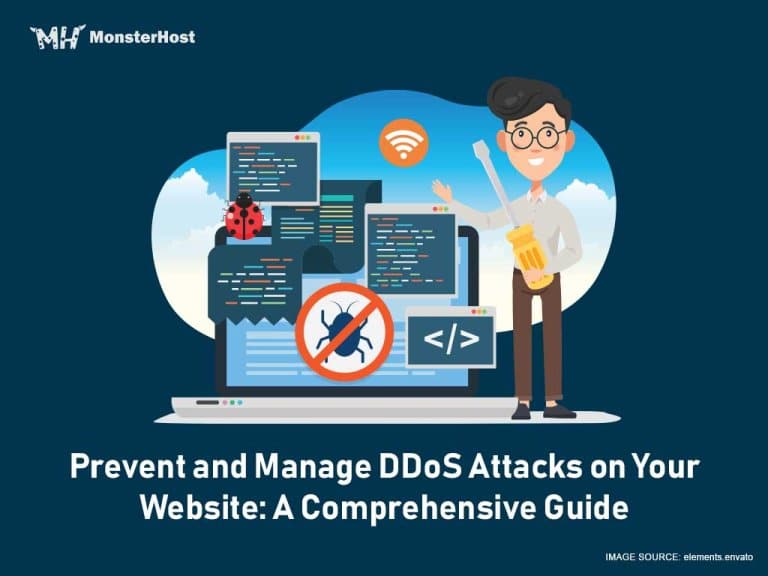In today’s digital landscape, the threat of Distributed Denial of Service (DDoS) attacks looms large over websites and online services. DDoS attacks can disrupt your online presence, tarnish your reputation, and result in significant financial losses. Understanding how to prevent and manage DDoS attacks is essential for any website owner or online business. In this comprehensive guide, we will delve into the world of DDoS attacks, exploring what they are, how they work, and most importantly, how to safeguard your website against them.
Table of Contents
What is a DDoS Attack?
A Distributed Denial of Service (DDoS) attack is a malicious attempt to disrupt the regular functioning of a network, service, or website by overwhelming it with a flood of internet traffic. Unlike a traditional Denial of Service (DoS) attack, which is carried out from a single source, DDoS attacks involve multiple compromised computers, known as “bots” or “zombies,” that are distributed across the internet. These bots are coordinated to flood the target server or network with traffic, rendering it unavailable to users.
How Do DDoS Attacks Work?
DDoS attacks work by exploiting the limitations of a target’s server or network resources. Here’s a simplified breakdown of the process:
- Compromise of Botnet: The attacker gains control of a network of compromised devices, often through malware or remote exploits. These devices become part of a botnet.
- Coordination: The attacker orchestrates the botnet to send a massive volume of requests or traffic to the target website or server.
- Overwhelming Resources: The target’s resources, such as bandwidth, processing power, or memory, become overwhelmed by the flood of incoming requests. This leads to a slowdown or complete unavailability of the target.
- Service Disruption: The website or online service becomes inaccessible to legitimate users, resulting in service disruption and potential financial losses.
The Impact of DDoS Attacks
DDoS attacks can have severe consequences for websites and online businesses:
- Loss of Revenue: Downtime caused by a DDoS attack can lead to loss of sales, advertising revenue, and customer trust.
- Reputation Damage: Frequent attacks can tarnish your website’s reputation and deter visitors.
- Increased Costs: Mitigating DDoS attacks often requires investing in security solutions, which can be expensive.
- Data Breach Risk: DDoS attacks can serve as a smokescreen for other cyberattacks, such as data breaches or malware injections.
- Legal Consequences: Regulatory bodies may impose fines for not adequately protecting user data during an attack.
Now that we understand the threat of DDoS attacks, let’s explore prevention and mitigation strategies.
Preventing DDoS Attacks
Use a DDoS Mitigation Service: Consider subscribing to a DDoS mitigation service offered by reputable cybersecurity companies. These services employ sophisticated techniques to identify and filter out malicious traffic.
Implement Web Application Firewalls (WAFs): A WAF can protect your website from application layer DDoS attacks by inspecting and filtering traffic. Ensure it is configured to detect and block suspicious activity.
Load Balancing: Distributing incoming traffic across multiple servers can help absorb traffic spikes caused by DDoS attacks. Load balancers distribute requests evenly and can route traffic away from affected servers.
Rate Limiting: Implement rate-limiting rules to restrict the number of requests a single IP address can make within a specified time frame. This can mitigate attacks by limiting the number of requests a single bot can generate.
Content Delivery Network (CDN): A CDN can absorb a significant portion of DDoS traffic by caching and distributing content from various server locations. CDNs have robust DDoS protection mechanisms in place.
Anomaly Detection: Use intrusion detection systems (IDS) and intrusion prevention systems (IPS) to detect unusual traffic patterns or suspicious behaviour and take action accordingly.
Managing DDoS Attacks
- Stay Calm and Communicate: In the event of a DDoS attack, it’s crucial to stay calm and communicate with your team and hosting provider. Notify your users of potential service disruptions and provide updates on the situation.
- Activate DDoS Protection Services: If you have a DDoS protection service in place, activate it immediately. These services can detect and filter malicious traffic, allowing legitimate traffic to pass through.
- Monitor Traffic: Continuously monitor your network and server traffic to identify the attack’s characteristics and make informed decisions.
- Incident Response Plan: Develop a comprehensive incident response plan that outlines the steps to take during a DDoS attack. Assign roles and responsibilities to your team members.
- Contact Hosting Provider: If you’re using a hosting provider, get in touch with their support team. They may have DDoS mitigation measures in place at the network level.
- Backup Systems: Maintain backup servers or a backup hosting provider to redirect traffic to in case of an attack, ensuring minimal downtime.
Post-Attack Analysis
After a DDoS attack has been mitigated, it’s essential to perform a post-attack analysis:
- Identify Attack Source: Try to trace the source of the attack. This information can be useful for legal action or further protection measures.
- Strengthen Security: Assess the attack’s effectiveness and identify vulnerabilities that may have been exploited. Strengthen your security measures accordingly.
- Review Incident Response: Evaluate your incident response plan’s effectiveness and make improvements for future incidents.
- Report the Attack: Depending on the severity and impact of the attack, consider reporting it to law enforcement agencies.

Conclusion
DDoS attacks continue to be a significant threat to websites and online services. However, by implementing preventive measures and having a robust incident response plan in place, you can minimize the impact of these attacks. Remember that DDoS protection is an ongoing process, and staying informed about emerging threats is key to maintaining the security and availability of your online assets. With a proactive approach to DDoS prevention and management, you can safeguard your website and protect your online reputation.






